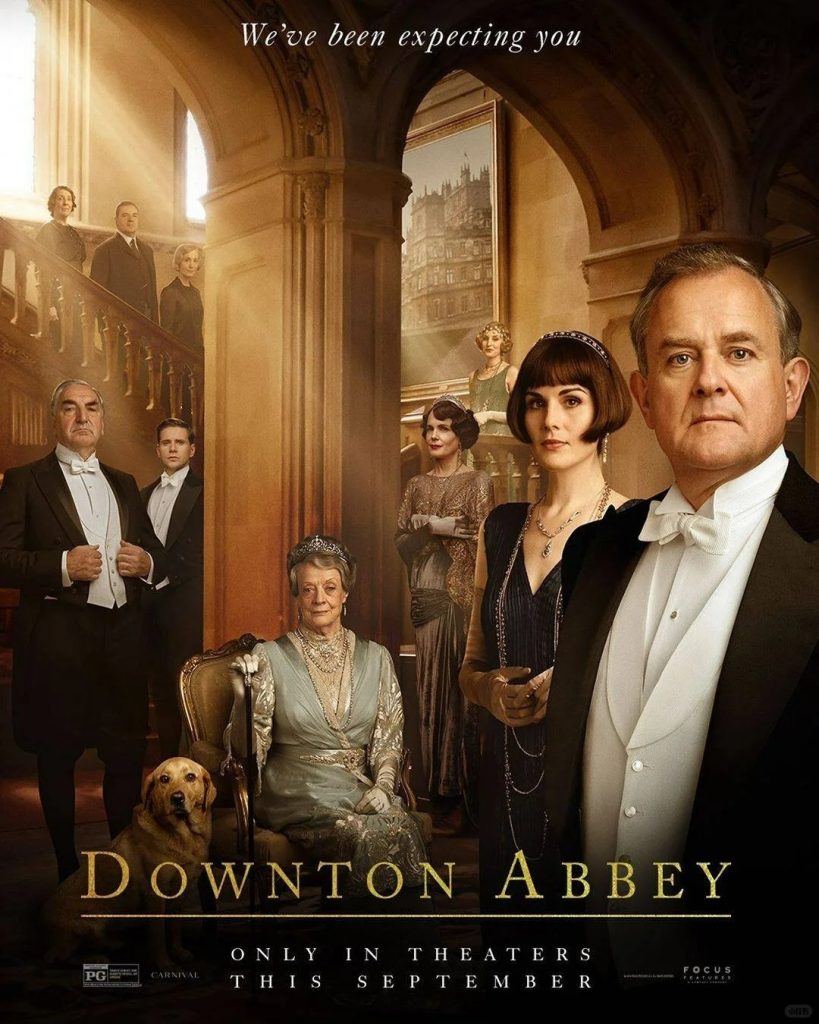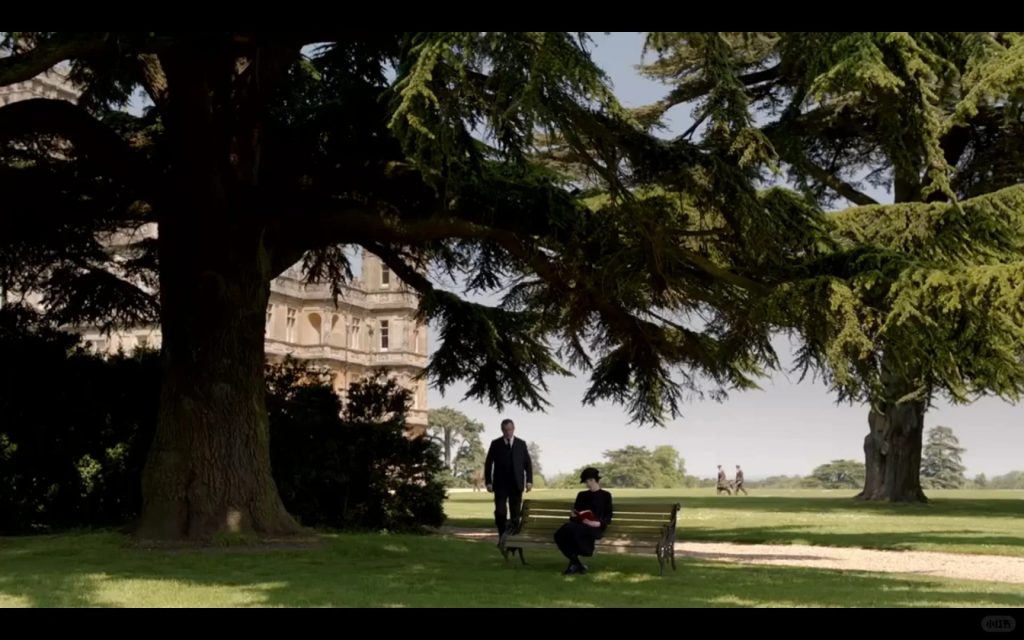Downton Abbey Analysis: The Epitome of Edwardian Aristocracy and Cultural Phenomenon
terehiatheatre // Episode 2025-04-30
I. Core of the Series: A Social Slice of the Edwardian Era
As a landmark period drama produced by ITV with a multi-million-pound budget, Downton Abbey uses the Yorkshire estate of the Crawley family (1912–1926) as a stage to depict the struggles and transformations of the British aristocracy amid historical upheaval. This 9.4/10-rated masterpiece on Douban deconstructs Edwardian social structures through its dual narrative of “upstairs aristocracy and downstairs servants.” From the in heritance crisis triggered by the Titanic sinking to World War I traumas and female awakening, each episode metaphor (metaphorically reflects) pivotal historical turning points. The global mourning over “Big Cousin” Matthew’s death in the series attests to its unforgettable character portrayals.
heritance crisis triggered by the Titanic sinking to World War I traumas and female awakening, each episode metaphor (metaphorically reflects) pivotal historical turning points. The global mourning over “Big Cousin” Matthew’s death in the series attests to its unforgettable character portrayals.
 heritance crisis triggered by the Titanic sinking to World War I traumas and female awakening, each episode metaphor (metaphorically reflects) pivotal historical turning points. The global mourning over “Big Cousin” Matthew’s death in the series attests to its unforgettable character portrayals.
heritance crisis triggered by the Titanic sinking to World War I traumas and female awakening, each episode metaphor (metaphorically reflects) pivotal historical turning points. The global mourning over “Big Cousin” Matthew’s death in the series attests to its unforgettable character portrayals.
II. Cultural Symbols: The Pinnacle of Visual Aesthetics
1. Architecture and Costumes
Highclere Castle, the filming location and a Grade I listed building, serves as a living fossil of Edwardian aristocratic life with its Gothic Revival exterior and Rococo interiors. Costume designer Anna Robbins created over 2,000 outfits, from Lady Mary’s pearl-adorned headdresses to servants’ aprons, adhering strictly to late-Victorian dress codes. The “hat rivalry” between Mary and Edith was even called an “Edwardian fashion textbook” by Vogue.
2. Etiquette and Language
Dowager Countess Violet’s witty one-liners (e.g., “Change is inevitable. Except from a vending machine.”) became cultural phenomena, embodying the aristocracy’s characteristic “优雅讽刺” (elegant sarcasm). The address system (e.g., “Mr. Carson” and “Milady”) and close-ups of dining etiquette visually interpret the traditional hierarchy.


III. Character Portraits: Multi-dimensional Depictions of Humanity
1. Mary Crawley: From Aristocratic Arrogance to Feminine Awakening
Michelle Dockery’s portrayal of the eldest daughter, evolving from the “Rose of Downton” to estate manager, mirrors the early 20th-century transformation of British women’s social roles. Her romance with Matthew was praised by The Guardian as “a perfect blend of Jane Austenian restraint and modern female consciousness.”
2. Carson the Butler: A Contradiction Between Tradition and Change
Jim Carter’s portrayal of this old-school butler highlights the tension of an era where electric lights replaced candles and cars entered the estate. While enforcing rules like “servants must not look masters in the eye,” he quietly supports maid Daisy’s educational aspirations, symbolizing the quintessential British aristocratic spirit.
3. Thomas Barrow: The Redemption of a Marginalized Figure
This gay valet’s struggles reveal the dual oppression of gender and class in Edwardian England. His journey from scheming to self-acceptance showcases the complexity and resilience of human nature.
IV. Historical Mirror: A Dirge for the Aristocratic System
IV. Historical Mirror: A Dirge for the Aristocratic System
(1) Economic Decline
Robert’s investment failures and the estate’s financial crisis reflect the early 20th-century economic plight of landed gentry. Cora’s American inheritance (based on the real-life American heiress Countess of Carnarvon) underscores the old aristocracy’s dependence on new money.
(2)Social Upheaval
World War I shattered the class structure: aristocratic sons perished at the front, maids worked in factories, and tenants demanded rent reductions. Tom Branson’s rise from Irish chauffeur to MP epitomizes the “ascendancy of the new elite.”
(3)Cultural Clashes
Violet’s debates with Isobel—over whether “charity should maintain dignity” versus “relief should prioritize effectiveness”—embody conflicts between traditional aristocratic values and modern humanitarianism, culminating in the royal visit subplot of the film adaptation.

V. Global Impact: From TV Series to Cultural Tourism IP
1. Cinematic Legacy
With 15 Emmy Awards, 6 Golden Globes, and a $190 million global box office for its film adaptation, Downton Abbey spawned a genre of “British period dramas” including The Crown and All Creatures Great and Small.
2. Cultural Tourism Economy
Highclere Castle attracts 150,000 annual visitors, offering experiences like “Downton Afternoon Tea” and “Aristocratic Lifestyle Days.” Its costume exhibitions at New York’s Metropolitan Museum drew massive crowds, with merchandise sales exceeding £20 million.
3. Academic Research
Cambridge University offers a course titled “Downton Abbey and British Society,” analyzing the historical authenticity of legal documents and letters in the series. Its “master-servant contracts” and “inheritance laws” have become classic case studies in legal history.
Conclusion: When History Meets Reality
The charm of Downton Abbey lies in its dual role as a meticulously woven aristocratic epic and a prism reflecting human nature. From Mary’s declaration of independence to Thomas’ self-redemption, every character navigates their place in history’s tide. As Violet aptly states: “The past is a foreign country; they do things differently there.” Spanning 13 years, this series has become a bridge between history and reality, allowing audiences to glimpse eternal humanistic light through British aestheticism.
